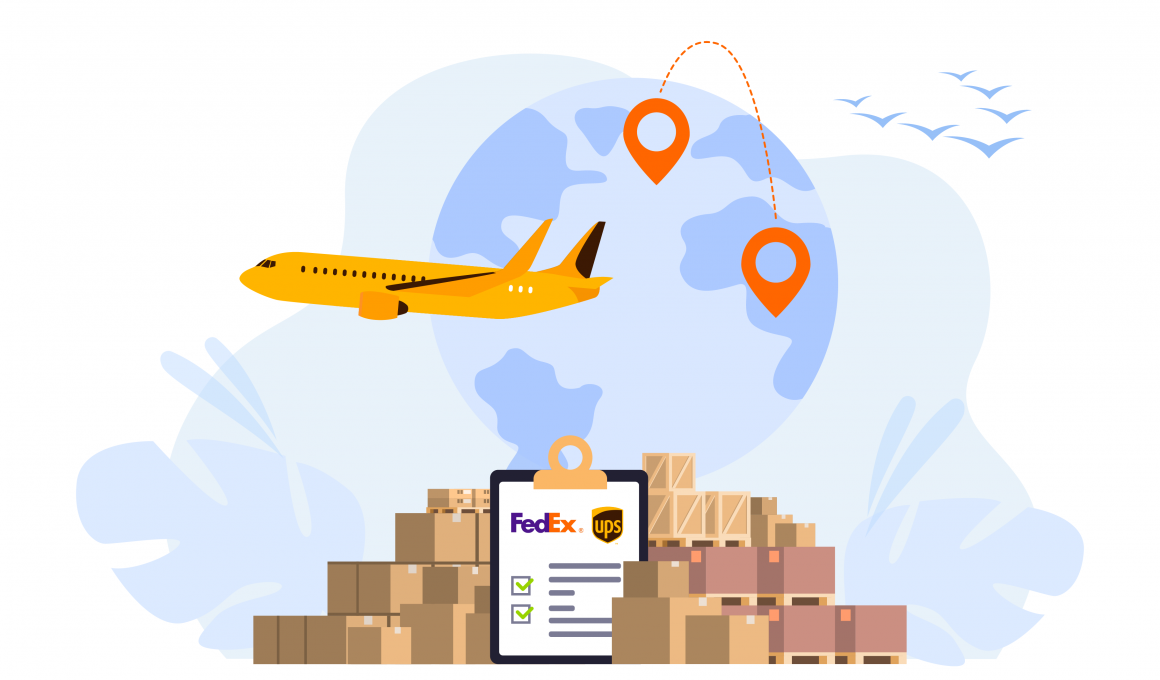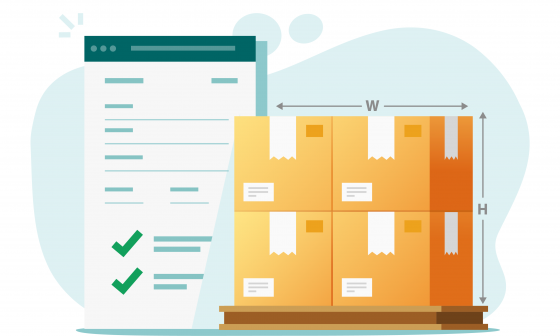Global shipping carriers like FedEx and UPS have specific shipping zones. Shipping contracts are drawn based on weight and the zones to which packages are shipped. Zone specifications closely relate to the distance covered. Across the US, there are seven different FedEx/UPS shipping zones (in numerical order from 2-8), and these carriers operate by including them.
While initiating the order fulfillment for your e-commerce business, you need to keep in mind different shipping zones. It is because zones will affect your costs of fulfillment and the time of delivery. Understanding shipping zones clearly will enable you to achieve the fulfillment of your e-commerce business. You can consider these zones to lower the costs of shipping.
Let us talk about shipping zones
Simply put, shipping zones are areas or territories for e-commerce delivery. The zones are determined according to the distance from the warehouse to the final destination. If the distance from a warehouse to the address of a customer is farther, it will be considered a higher zone. Each zone contains ZIP codes.
For instance, when the starting point of a parcel is in the zip code 377, it will fall in the range between 376 and 379, which are in UPS Zone 2. These deliveries are relatively closer to the warehouse. Shipping a package to the destination ZIP code 970 will reach the US Pacific Coast. It is in UPS Zone 8 and originated from zip code 377. A parcel to Hawaii will fall in Zone 45.
All the shipping zones have different prices. For instance, a 6 lbs (2.7 kg) parcel that ships through FedEx Ground for reaching Zone 2 will have a price of $9.87. In the case of Zone 5, the cost is $12.92 and for Zone 8, it is $14.97.
According to specific shipping zones, delivery companies charge a parcel. A package that will reach Zone 2 is likely to consume less fuel, driving time, and other travel hassles than Zone 7. Therefore, charges will vary.
How Different Zones Influence E-Commerce Delivery?
Both FedEx and UPS set shipping zones based on the strategic locations of their warehouses. These two carriers have different ZIP codes according to their shipping zones. Besides, the range of services that these two carriers offer vary from one zone to another.
FedEx has eight different zones when it comes to FedEx Home and FedEx Ground. On the other hand, the express services of FedEx have 16 different zones.
When it comes to e-commerce fulfillment, the impact of shipping zones occurs in two ways – cost and delivery time. The dispatch cost of a parcel has the most direct impact. These two carriers set prices based on the zones.
Other than long-distance, delivery time and the parcel weight is also instrumental in determining prices for various zones.
Here are some of the crucial factors to determine shipping zones:
Delivery Time
Learning about the shipping zones is not enough to figure out the time a package takes to reach a customer. If you send a package to Zone 2 or 3, it may reach in a couple of days. Similarly, if you ship packages to higher zones, it may take five days. Besides, even if two packages ship to the same destination or zone, the delivery times might be different. The bottom line is determining delivery times requires a separate calculation.
Cost of Delivery
How much distance a package covers from a warehouse, makes a zone higher or lower. If the distance is more or higher zone, the cost of sending a package will be higher too. As discussed earlier, you can leverage various shipping zones to lower your e-commerce delivery costs.
Weight Factor in Shipping Zones
FedEx and UPS set prices according to zones and weight. Higher zones will have higher pricing for heftier packages.
There are substantial price variances across various zones considering the dimensional weight. If your business sells heavy items, you need to include shipping zones into your fulfillment strategy. Lowering the number of zones is likely to make a significant variance in the shipping costs.
FedEx Shipping Zones
FedEx releases its updated rates by zone and weight at the beginning of every year. You can get detailed information on FedEx shipping rates on their website. Here are the FedEx rates for 2020. Although, these are going to change as 2021 is almost there.
The breakdown of FedEx shipping zones by distance is below:
| Zone | Distance (miles) from the point of origin to destination |
| 2 | 0-150 |
| 3 | 151-300 |
| 4 | 301-600 |
| 5 | 601-1,000 |
| 6 | 1,001-1,400 |
| 7 | 1,401-1,800 |
| 8 | 1,801 or more within the adjoining US |
Besides published rates and shipping zones, FedEx may also offer negotiated rates to shippers with a high-volume of packages. You can get details from your fulfillment warehouse on getting the benefit of negotiated shipping rates.
UPS Shipping Zones
UPS allows you to put in your ZIP code for a personalized shipping zone chart. You will be able to download the chart as an Excel sheet.
UPS Shipping Zones (Source: www.refundretriever.com)
In the zone chart, you can see the ZIP codes for each zone to ship packages from your fulfillment center. However, the chart does not have pricing.
How to Use Shipping Zones to Lower Fulfillment Costs
At the initial phase of your e-commerce business, you can either manage fulfillment from your warehouse or hire a company. However, over a period when the business grows, your strategy regarding fulfillment needs to be different.
Multiple Warehouses
One way to manage your fulfillment and lower its costs is spreading your inventory through multiple warehouses. You may intuitively select a company near your business site or the nearby ports for fulfillment. However, it may not be an ideal e-commerce fulfillment strategy. Keeping inventories across multiple warehouses enables quicker and cheaper fulfillment.
E-Commerce Zone Skipping Strategy
You can opt for a logistics technique like zone skipping to move packages near customers or the destination. It gets you lower shipping charges because FedEx and UPS will require taking them through only a few shipping zones.
The multi-modal delivery is a good example of zone skipping through which shipping occurs through batches by less-than-truckload (LTL) or full truckload (FTL) to a fulfillment center near customers. Subsequently, carriers deliver each order to customers. Due to the lower rates of freight shipping, you will bear reduced fulfillment costs.
You can use zone skipping to your advantage by completing deliveries without distributing your inventory. Rather, you can choose strategic warehouse locations and keep your products for your customers in a handful of zones. Besides, you may be able to confirm a two-day delivery window for most of your customers.





